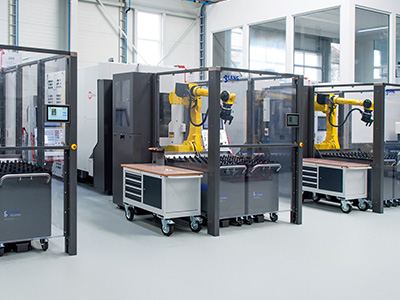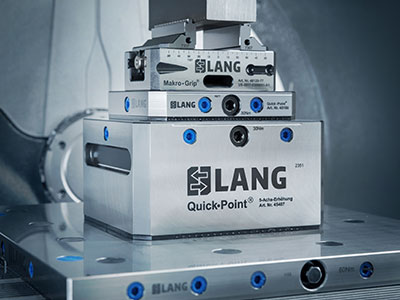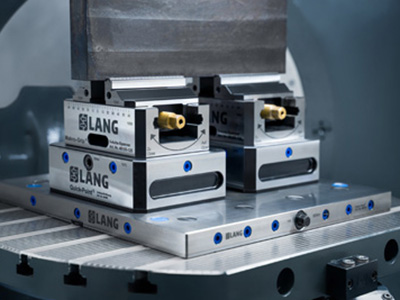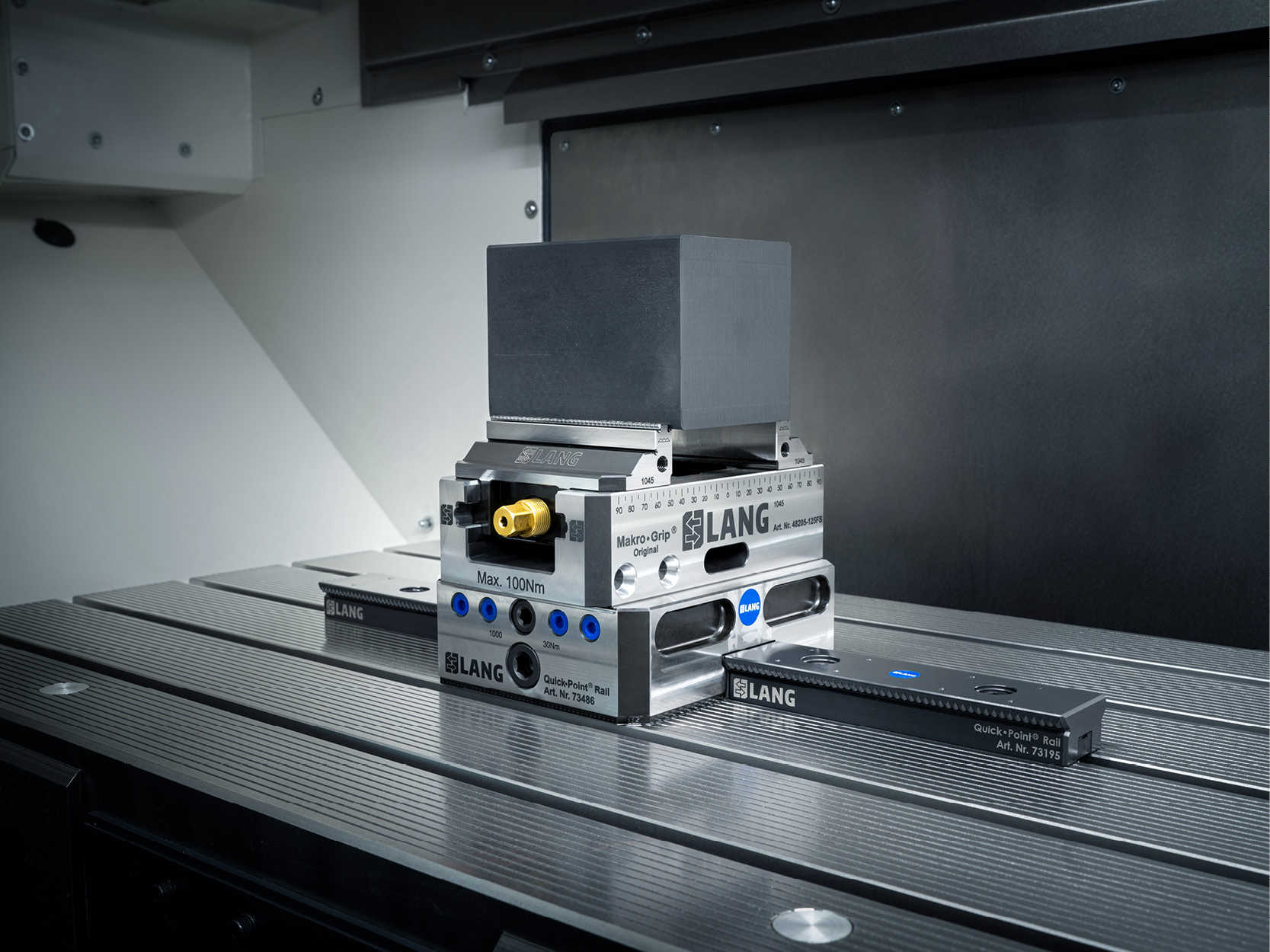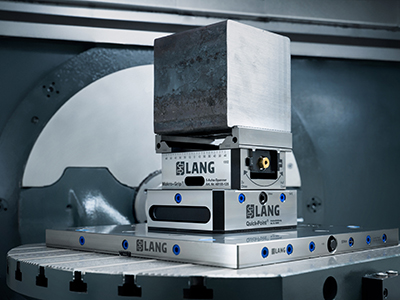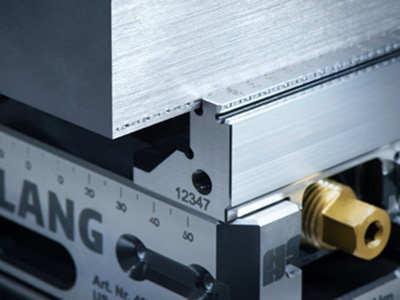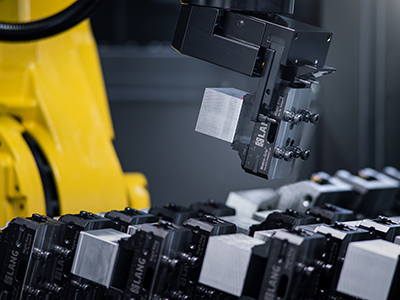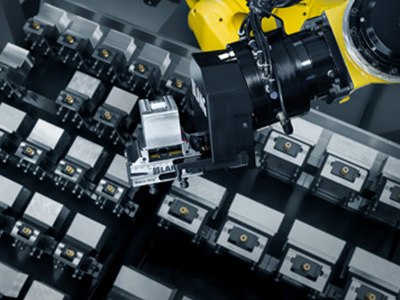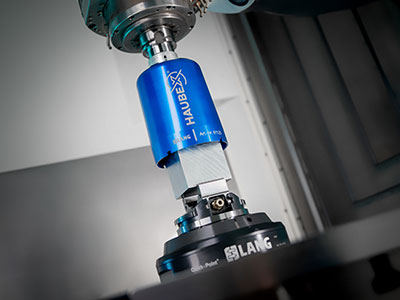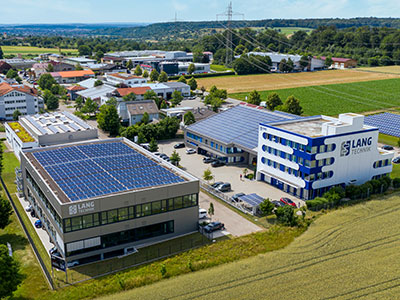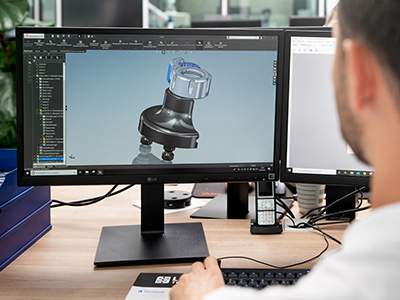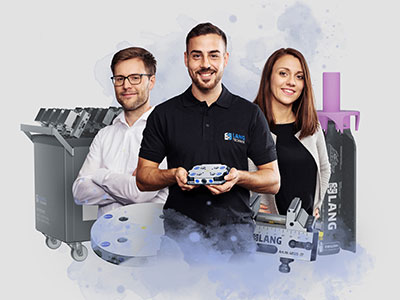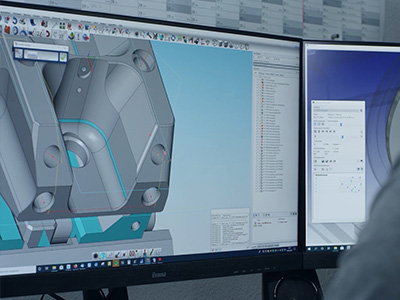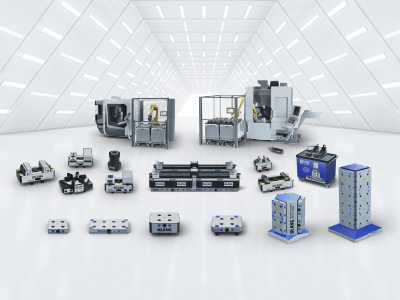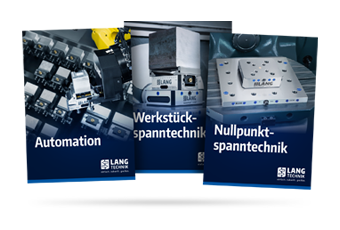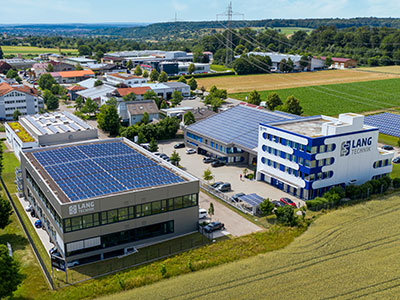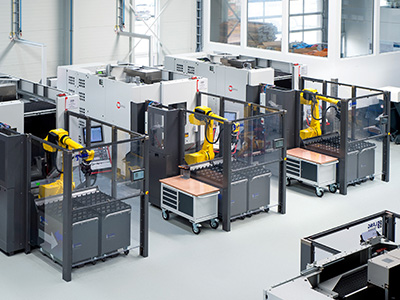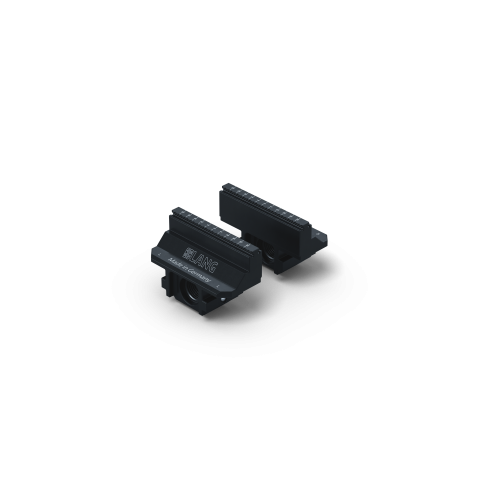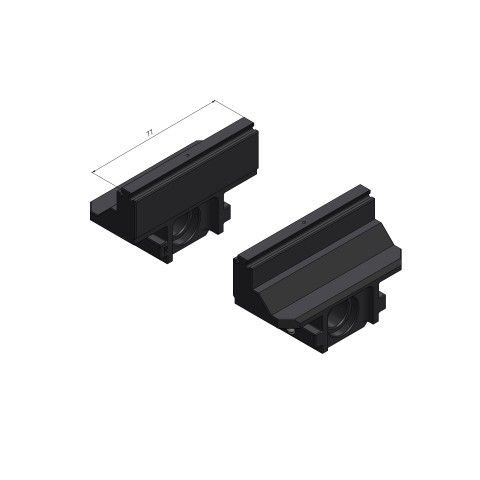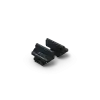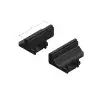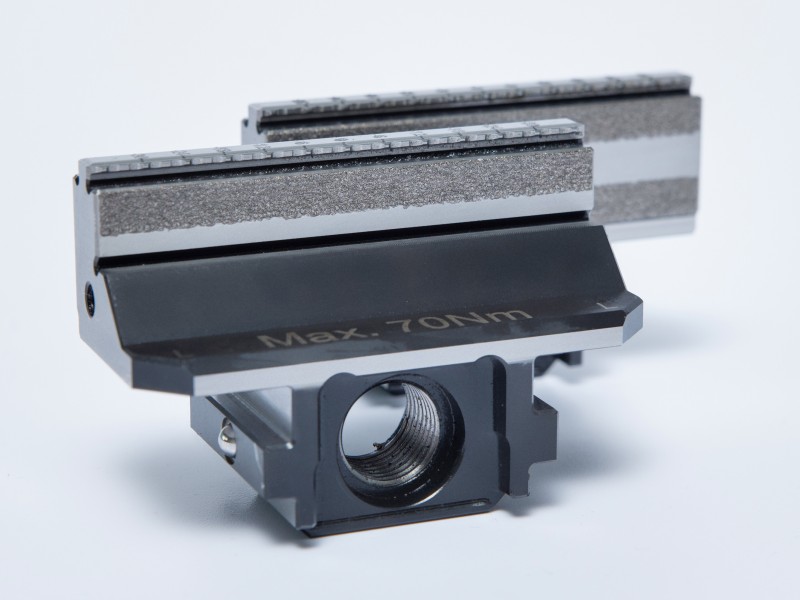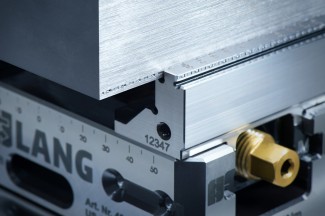Key data at a glance
The Makro•Grip® 77 spare jaws milled from solid with a jaw width of 77 mm are suitable for the Makro•Grip® Night-King vice. Thanks to the serration on both sides, the spare jaws can be turned to realise a clamping range that corresponds to almost the entire length of the base and thus ensures ideal accessibility with low interference contours. Workpieces can be clamped in the holding teeth by form-fit at a clamping depth of 3 mm. In addition, the spare jaws offer smooth clamping options for second operations.
Makro•Grip® Stamping Technology and Raw Part Clamping
The Makro•Grip® 5-Axis Vise and its unique benefits of the stamping technology has been considered „The Original“ and a benchmark in the 5-face machining of raw parts for years. Its compact design and high holding forces make the Makro•Grip® 5-Axis Vise the ideal clamping device for machining raw parts.
- Holding force Thanks to the form-fit clamping principle, highest holding forces can be achieved with Makro•Grip®, even at low clamping pressure.
- Process reliability Clamping with Makro•Grip® provides maximum process reliability and is easy on the workpiece to be processes at the same time.
- Accessibility The compact Makro•Grip® self-centering vises guarantee ideal accessibility in the 5-axis machining of raw parts.
Learn all about the benefits and functionality of ourMakro•Grip® Raw Part Clamping and Stamping Technology.
Discover nowServices
We will be happy to advise you individually and adapt your products for the best possible application.
Tungsten-Carbide-Coating
A special Tungsten-Carbide Coating can be applied on the plain clamping surfaces of the Mak-ro•Grip® jaws in order to double the friction force when clamping non-stamped parts, without leaving any traces on the workpiece.
Modified Clamping depth
Sometimes raw material has a certain radius, which makes it hard to clamp it on the 3 mm step of the Makro•Grip® jaws. This can be solved by lowering the clamping step so that the workpie-ce is held above the radius. On the one hand, this provides a resting surface for the workpice, on the other hand it ensures safe clamping.


